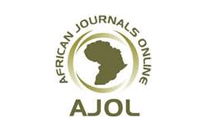Mansoura Veterinary Medical Journal
Document Type
Original Article
Subject Areas
Aquatic medicine
Keywords
Nile tilapia, A. hydrophila, Histopathology, Antibiogram.
Abstract
Objective: To identify suspected causes of mass mortality in Oreochromis niloticus at El-Manzala fish farms in Dakahlia Governorate, Egypt, during disease outbreaks in the summer of 2019.
Design: Observational study.
Animals: Two hundred diseased and freshly dead Oreochromis niloticus (Nile tilapia) weighting 100-150 g.
Procedures: Collected fish samples were subjected to clinical, postmortem and bacteriological investigations regarding histopathological alterations, pathogenicity tests, and antibiogram susceptibility of the main isolated bacterial species.
Results: A total of 286 bacterial isolates were detected from all examined fish samples. Bacteriological examination revealed that all bacteria were gram-negative rods, which were identified as A. hydrophila (43.36%), A. sobria (20.28%), V. fluvialis (12.24%), V. parahemolyticus (10.14%), V. cholera (7.34%) and Ps. putida (4.895%). Confirmatory identification of the most predominant isolated species (A. hydrophila) was carried out using conventional PCR. An antibiogram was performed for the isolated A. hydrophila strains, revealing that the isolates showed high sensitivity to flumequine (UB) and cefepime (FEP), with a percent (83.33%) for each. The Multiple Antibiotic Resistance (MAR) indices of the 12 identified A. hydrophila ranged from 0.2 to 0.6 with an average (0.32).
Conclusion and clinical relevance: This study concluded that A. hydrophila is one of the main causes of summer mass mortality in O. niloticus in the study area.
How to Cite This Article
EL- Sherbiny, Amira M. M.; Fouda, Moustafa M. S.; Shakweer, Medhat S.; and Zaki, Viola H.
(2023)
"Investigation Of Nile Tilapia Mortalities During Summer 2019 In El-Manzala Fish Farms In Dakahlia Governorate, Egypt,"
Mansoura Veterinary Medical Journal: Vol. 24:
Iss.
3, Article 11.
DOI: https://doi.org/10.35943/2682-2512.1012
Receive Date
December 3, 2021
Accept Date
March 16, 2022
Publication Date
2023






